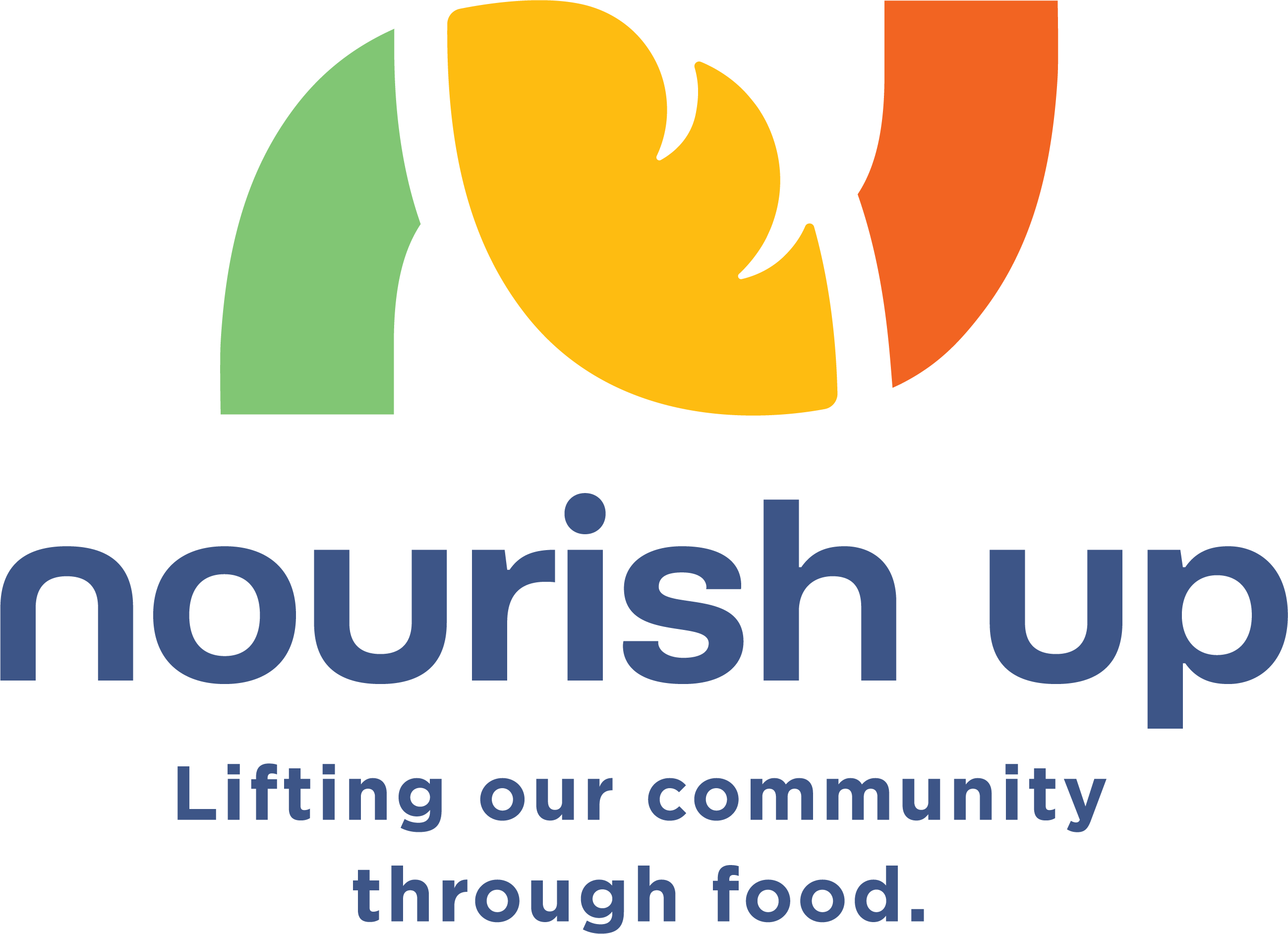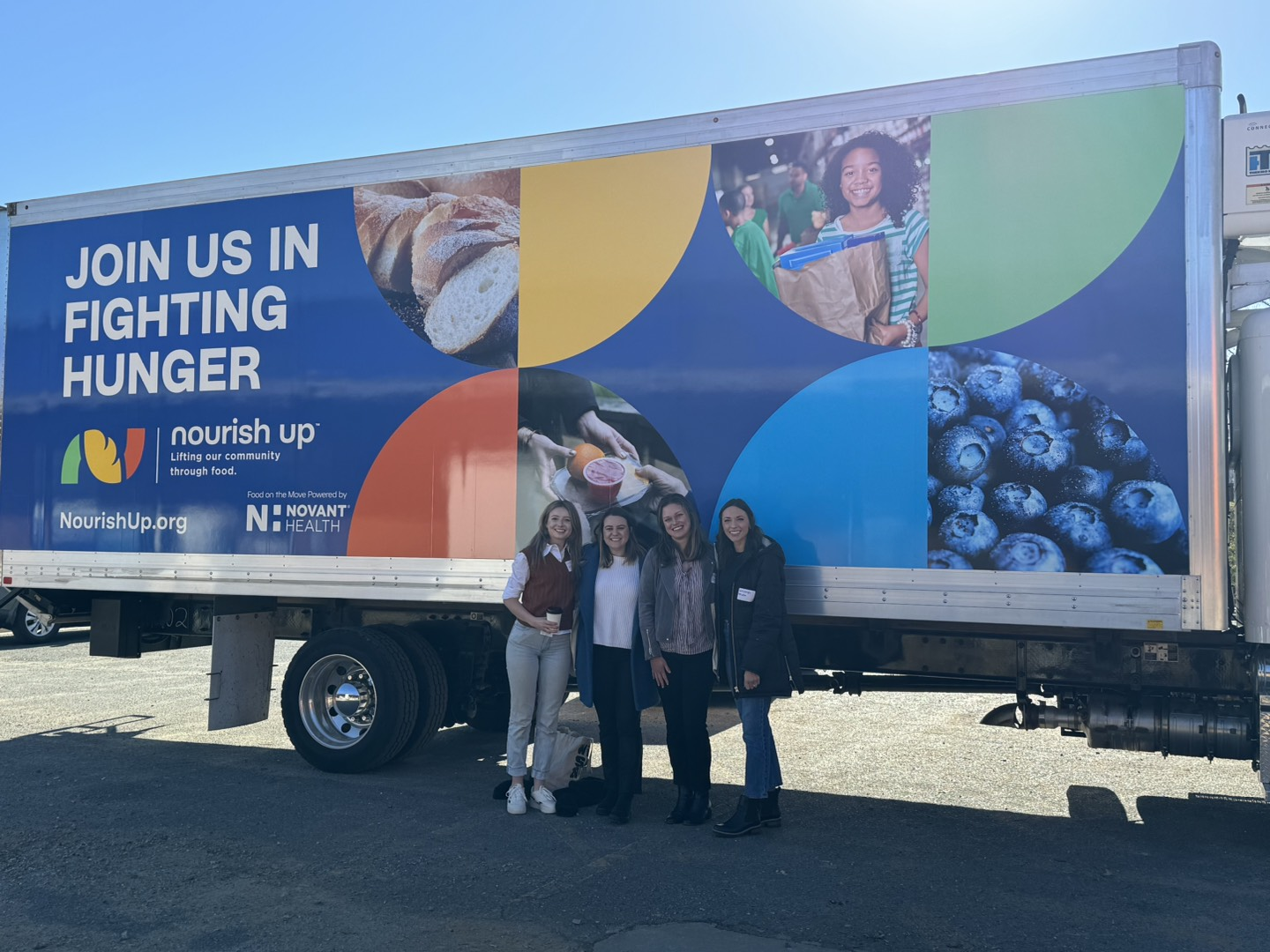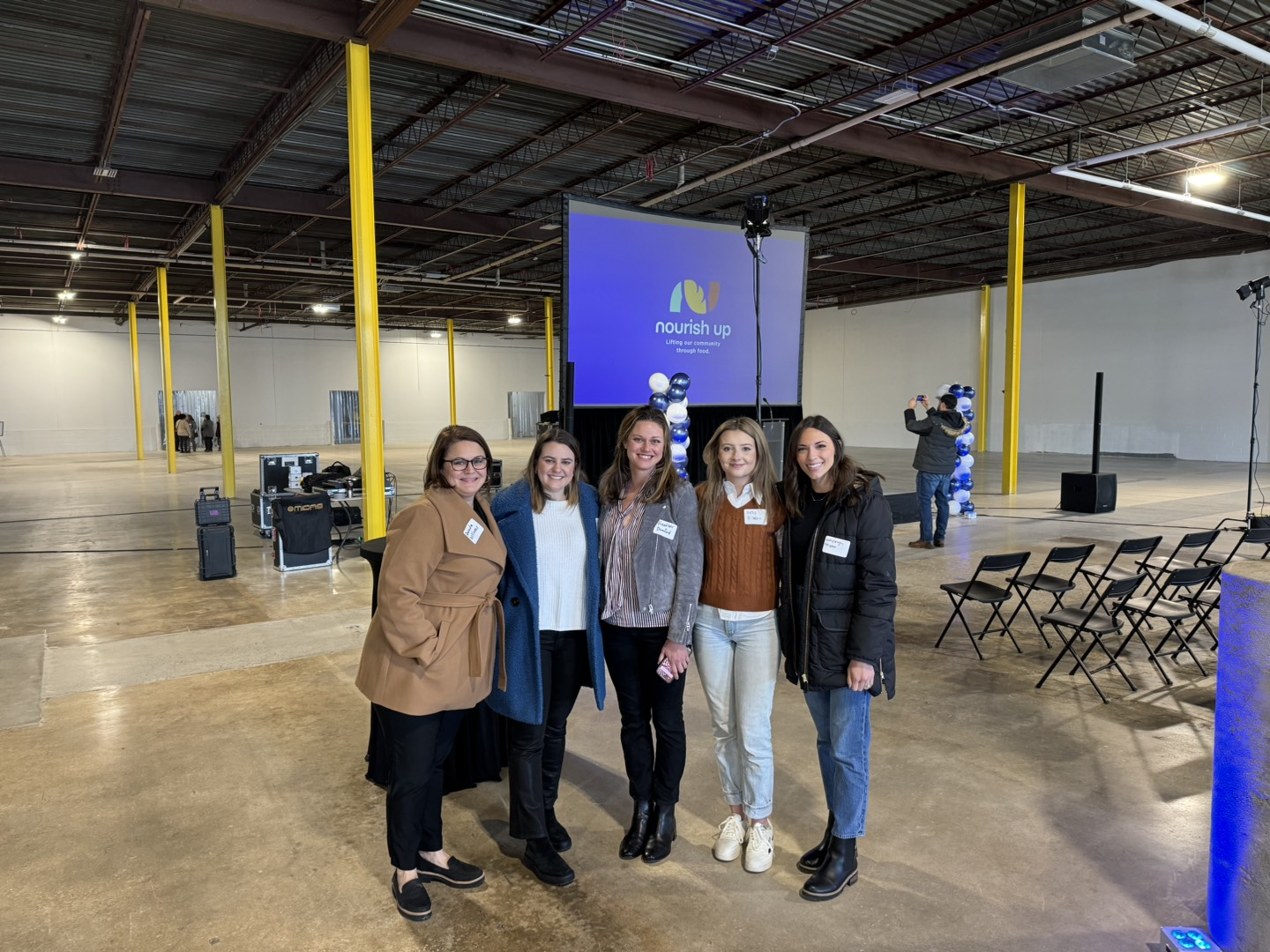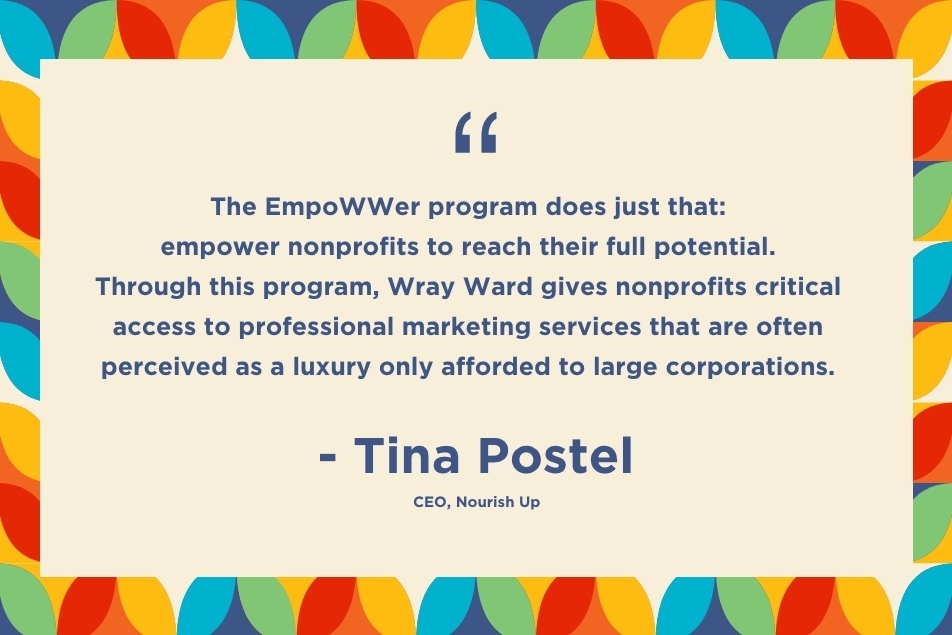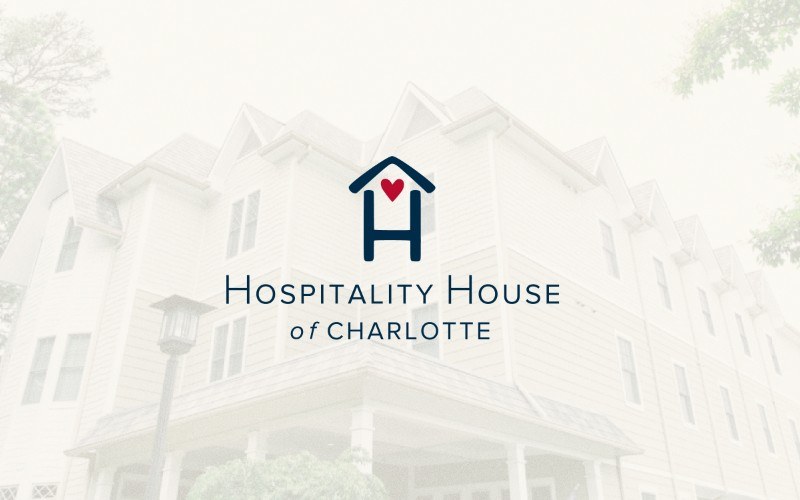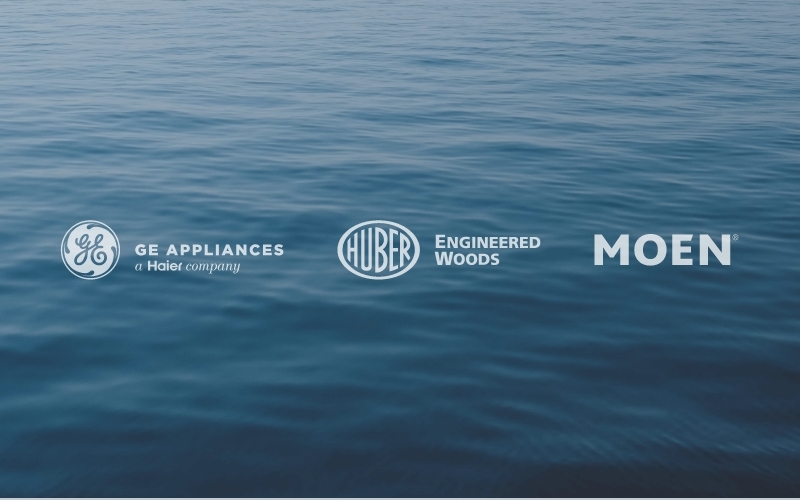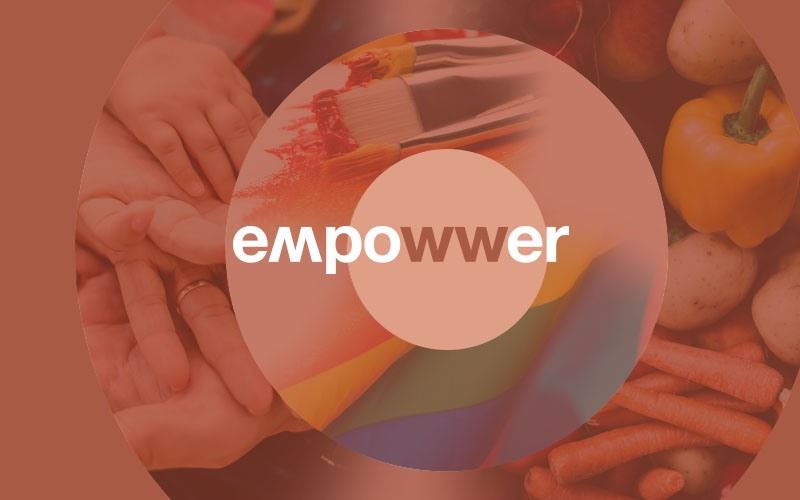Community
Creative
Brand Strategy

Witnessing ideas come to life is one of the great joys of marketing. What makes those wins all the more sweet is when they’re done for a good cause.
As chair of EmpoWWer, Wray Ward’s service-grant program supporting 501(c)(3) community initiatives, I’ve watched our agency donate time, resources and ideas to more than a dozen Charlotte-area nonprofit organizations over the years, including Mecklenburg County’s largest organization dedicated to ending food insecurity.
Now known as Nourish Up, this network of food pantries and meal delivery organization emerged from the union of two long-standing nonprofits — Loaves & Fishes and Friendship Trays — due to their shared mission to combat food insecurity. This set the stage for a new chapter in the organization’s journey. So, in 2021, they applied for an EmpoWWer grant in hopes of developing one unified brand that would carry their mission into the future.
After a completed building renovation, the Nourish Up brand that Wray Ward helped establish during our EmpoWWer partnership in 2022 has launched, giving us goosebumps and leaving us reminiscing about a wonderful partnership.
The Branding Challenge
In late 2021, the merger of Loaves & Fishes and Friendship Trays created a powerhouse for combating food insecurity. And yet, the challenge to embody a vision for the future through one clear brand remained. In fact, from a brand perspective, it was quite literally a merged organization: The logo consisted of the two former organizations’ logos side by side, and the temporary name was “Loaves & Fishes/Friendship Trays.”
When the Nourish Up team applied for an EmpoWWer service grant, they knew what they wanted — they just needed help getting there. They hoped to empower individuals receiving meals and groceries to take ownership of their well-being rather than feel as though they were receiving handouts. They charged Wray Ward to infuse the reimagined brand with its mission and values: nourishment and dignity.
With this information, we got to work.
Wray Ward was challenged to provide Nourish Up with:
A new name
A new logo and branding
Branding guidelines
Branding applications
We also conducted extensive stakeholder interviews to understand the legacy of the former organizations, each of which dated back over 40 years. With Nourish Up’s extensive impact and its history serving the community, we needed to nail the rebrand.
Crafting a New Identity
Working with Nourish Up was akin to working with a dream client. The team was collaborative and passionate; the work was comprehensive and productive.
“From our very first meeting, the team’s creative energy, excitement and dedication to this project was palpable,” said Nourish Up CEO Tina Postel. “The process to create a new name, logo and overall brand was thoughtful, intentional and inclusive.”
Naming Nourish Up
Using what we knew about Nourish Up’s values and vision for their brand as guideposts, our Creative team iterated dozens of names and grouped them by concept, such as:
Nourishment
Immediacy
Fresh start
Transaction from hand to hand
Utensils
After narrowing their ideas, the team presented more than 15 name possibilities. The winner — Nourish Up — would inform the entire future brand.
Concepting the Brand
Because treating others with dignity is at the core of Nourish Up’s work, it was important to develop a logo that visually infuses humanity into the organization’s branding. Kelly Gilbert, a designer at Wray Ward who had a heavy hand in the project, explained the inspiration behind the design of the Nourish Up logo and brand elements:
“Nourish Up is powered by collaboration and donations from people and organizations. Therefore, the united N and U in the logo emphasize the importance of that collaboration. The slight imperfections and organic shapes in the logo speak to fruits and vegetables, while rounded lines give it a friendly and approachable feeling. The warm colors reinforce the connotation of receiving a warm and nutritious meal, while the line passing through shows the ongoing journey of development and impact and the organization’s progressiveness.”
